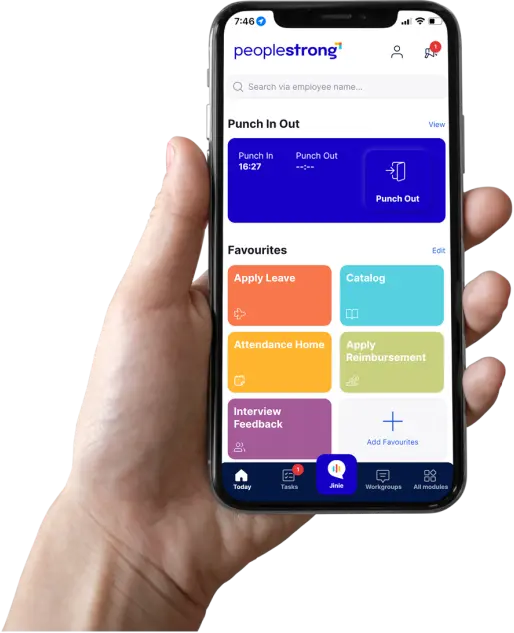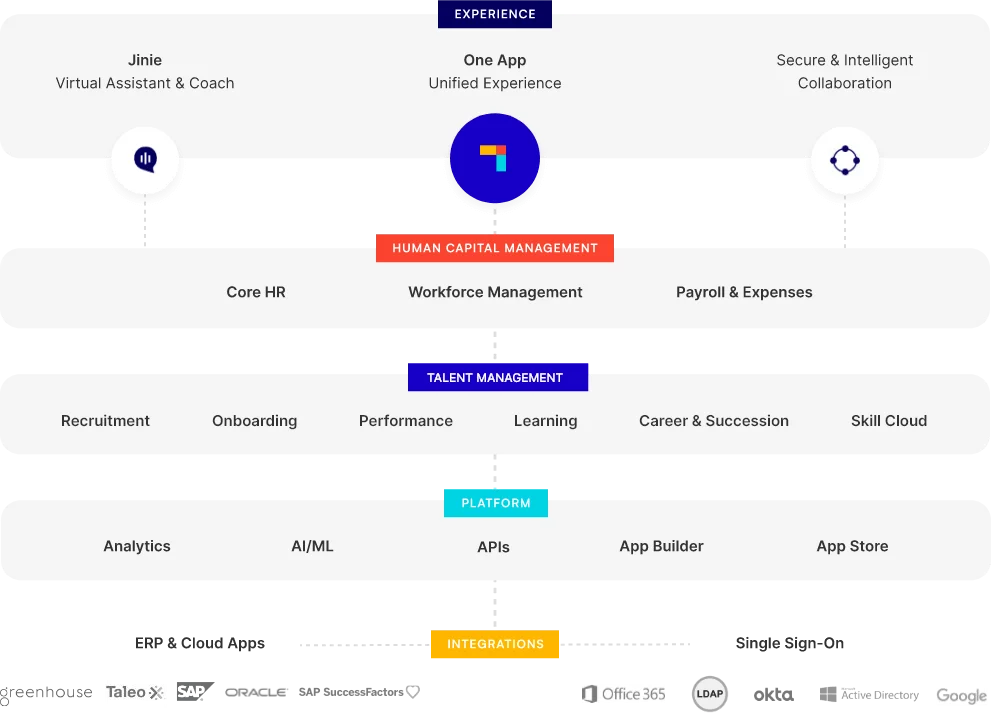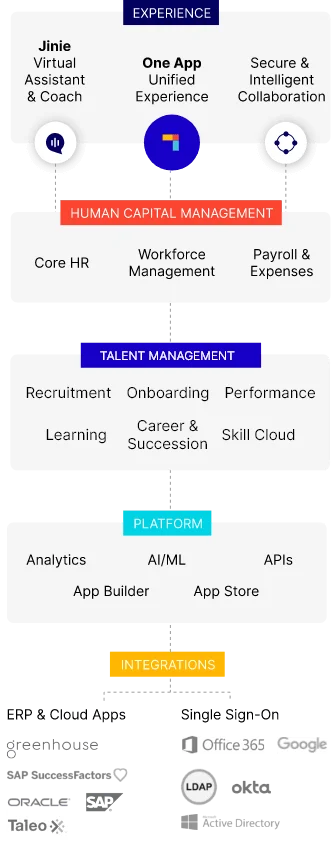In the current job market, where employees have more options than ever, companies that fail to retain their talent are setting themselves up for failure.
A high attrition rate leads to increased hiring costs, lower productivity, and a loss of institutional knowledge that can take years to rebuild. In fact,
In 2023, employee attrition rates declined in the Americas and EMEA regions but rose in the ACAP region. The Americas experienced a 1.2% decrease, while the ACAP region saw a 3.3% increase. Despite these fluctuations, these figures were among the most favorable recorded between 2015 and 2023.
Turnover rates differ across countries, but businesses in the Middle East generally experience above-average employee turnover. A recent study revealed that the region’s average turnover rate stands at 21%.
Continue reading as we explore how to calculate attrition rates, identify the factors driving employees away, and, most importantly, discuss strategies to retain them.
What Is Employee Attrition?
Employee attrition happens when people leave a company, and their roles remain unfilled. Unlike turnover, where businesses actively hire replacements, attrition often signals downsizing, restructuring, or shifts in workforce strategy.
It comes in different forms:
Voluntary vs. Involuntary Attrition
- Voluntary: Employees leave on their own terms, whether for career growth, better pay, or workplace dissatisfaction.
- Involuntary: The company makes the decision, often due to layoffs, restructuring, or performance-related dismissals.
Retirement, Resignations, Layoffs, and Job Eliminations
- Retirement: A natural phase, but failing to plan for it creates skill gaps.
- Resignations: The most common, often driven by pay concerns, lack of growth, or poor leadership.
- Layoffs: Budget cuts or economic downturns force companies to reduce headcount.
- Job Eliminations: Certain roles become obsolete due to automation or structural changes.
Monitoring attrition rate isn’t just about tracking numbers—it’s about understanding why people leave. A rising rate often signals trouble: declining morale, poor management, or outdated policies. Left unchecked, it can weaken a company’s stability and reputation, making it harder to attract and retain top talent.
How to Calculate Attrition Rate: A Step-by-Step Guide
HR teams spend hours discussing why employees are leaving, but the first step in solving the problem? Knowing the numbers.
Calculating attrition rate isn’t rocket science, but many companies get it wrong—either by using incomplete data or misinterpreting the results.
Here’s how to get it right.
Step 1: Understanding the Attrition Formula
Let’s start with the basics. The formula for attrition rate is:
Attrition Rate=(Average Number of Employees/Number of Employees Who Left)×100
It’s simple enough, but a lot of businesses fail to apply it correctly.
The formula is just the start. Accurate data is what makes or breaks your calculations.
Step 2: Collecting Accurate Data
A wrong formula won’t hurt as much as bad data. If your HR team isn’t tracking departures properly, your attrition rate will be misleading—and so will your decisions.
What should you be tracking?
- Who is leaving? Junior staff, mid-level managers, or senior executives?
- Why are they leaving? Voluntary exits (better offers, work-life balance) vs. involuntary (layoffs, restructuring).
- Which departments are losing people? A high attrition rate in sales vs. IT tells two different stories.
- Demographics? Are Gen Z employees quitting faster than Boomers? Are expatriates leaving more frequently?
HR teams that don’t break data down by these factors end up treating symptoms, not causes.
Common HR data mistakes:
- Not recording exact exit reasons (Just listing “resigned” doesn’t help).
- Ignoring contract employees in calculations.
- Overlooking early exits—if new hires are quitting in 3-6 months, something is off.
A recent report found that 43% of HR teams struggle to keep up with new responsibilities. Without precision, your attrition rate won’t reflect reality.
Step 3: Monthly, Quarterly, and Annual Attrition Rates
Not every company needs to track attrition the same way. The right timeframe depends on your industry and workforce trends.
When to use different calculations:
- Monthly Attrition Rate: Ideal for high-turnover industries like retail and hospitality. If staff exits are seasonal, a monthly view helps track patterns.
- Quarterly Attrition Rate: Best for industries where hiring cycles fluctuate. A finance firm, for instance, might have high exits after annual bonuses are paid out.
- Annual Attrition Rate: The gold standard for long-term workforce planning. Anything over 20% means you’re constantly backfilling roles instead of growing.
Tracking the wrong timeframe is like reading half a book—you miss the full story.
Step 4: Analyzing Trends and Patterns
Now that you’ve got your attrition rate, the next step is figuring out why people are leaving.
High-risk departments and roles
- Are certain managers losing more employees than others? Bad leadership = higher attrition.
- Are customer-facing roles losing employees faster? Burnout may be the issue.
- Is a specific region struggling with retention? Local labor laws and salary expectations vary.
Demographic patterns
- Younger employees (Gen Z, millennials): Likely to leave for better opportunities or remote work flexibility.
- Older employees (Gen X, Boomers): More likely to leave due to retirement or lack of upskilling opportunities.
- Expat workers: If you’re based in the Middle East, workforce nationalization policies could be a factor.
What data trends reveal:
- If high performers are quitting: Salary and growth opportunities need attention.
- If new hires leave within 6 months: Your onboarding process might be broken.
- If one department sees more exits than others: Leadership, workload, or team culture might be the issue.
A key reason employees leave their jobs is feeling undervalued or unappreciated, a sentiment particularly prevalent in the Middle East, where many workers believe their contributions go unnoticed or unrewarded.
To address this, businesses must prioritize regular communication with their employees, offering constructive feedback on performance. Additionally, creating opportunities for employees to share their ideas and participate in decision-making can foster a more engaged and motivated workforce.
Factors Contributing to High Attrition
Every resignation has a story. Some employees leave for better pay, others for a healthier work-life balance. Some walk away because they don’t see a future, while others are pushed out due to policies beyond their control.
The attrition rate isn’t just a statistic—it’s a reflection of how well (or poorly) a company is managing its people.
Let’s break down the biggest reasons employees are handing in their notice:
Workforce Nationalization Policies: A Shifting Talent Landscape
In many Middle Eastern countries, nationalization policies (Saudization, Emiratization, Omanization) are reshaping the workforce.
While these policies are designed to create opportunities for local talent, they also mean:
- Stricter hiring regulations for expatriates. Work permits are harder to secure and renew.
- A growing talent shuffle. Many skilled foreign workers are relocating to more stable markets.
- Uncertainty for long-term employees. Expat professionals who have worked for decades in the region suddenly find themselves at risk of replacement.
For businesses, this creates a retention challenge. Losing experienced employees due to policy shifts means companies need stronger engagement strategies to retain both local and expatriate talent.
Compensation and Benefits Disparities: Is the Pay Worth It?
It’s not just about salary—it’s about what that salary can buy. And in cities like Dubai, Riyadh, and Doha, the cost of living is rising fast.
- Housing allowances often don’t match rental hikes.
- School fees for expatriate children are skyrocketing.
- Inflation is eating into real wages, making salaries feel smaller.
Work Culture and Job Satisfaction: The Silent Dealbreaker
A well-paying job won’t keep people if the culture is toxic, exhausting, or uninspiring.
- Long working hours are common in industries like finance, hospitality, and consulting.
- Poor management is a major red flag—employees don’t quit their jobs; they quit bad bosses.
- Limited career progression makes employees feel stuck.
When people start their workdays counting down to quitting time, attrition is inevitable.
A study revealed that only 23% of employees worldwide feel engaged and enthusiastic at work. This leaves nearly 80% mentally disengaged and simply awaiting a better opportunity.
Lack of Employee Engagement and Career Development: The Glass Ceiling Effect
When employees feel like they’ve hit a dead end, they leave.
- No mentorship? No leadership opportunities? No upskilling? Employees will go where they can grow.
- New graduates and young professionals crave career progression. If they don’t see a path forward, they’ll switch jobs within two years.
- A report found that 94% of employees would stay longer if their company invested in their career development.
Retention isn’t about perks. It’s about showing employees that staying is just as rewarding as leaving.
Remote Work and Digital Transformation: The Flexibility Factor
Companies that force employees back to the office full-time are seeing higher resignation rates.
- Employees now expect flexibility—not as a bonus, but as a basic right.
- Remote and hybrid work models reduce burnout and increase productivity.
- Companies that resist flexible work policies are pushing employees to more progressive competitors.
A study found that half of the employees would consider leaving if forced back to the office full-time.
The message is clear: Adapt or lose talent.
Strategies to Reduce Attrition and Improve Retention
A high attrition rate isn’t just about numbers—it’s about real people choosing to walk away. Employees don’t leave jobs; they leave cultures, bad leadership, and stagnant career paths. If companies want to retain their best talent, they need to stop focusing on damage control and start fixing the root issues.
Let’s talk about real solutions:
1. Enhancing Employee Engagement and Workplace Culture
Employees don’t want free coffee. They want to feel valued, heard, and challenged in a workplace that respects them.
- Leadership makes or breaks the engagement. Leaders who micromanage, dismiss ideas, or fail to recognize contributions create disengaged teams.
- Diversity and inclusion aren’t just buzzwords. Multinational teams thrive when differences are celebrated, not just tolerated. Employees stay when they feel like they belong—not when they’re just a number on a payroll.
- Regular check-ins matter. A quarterly survey won’t cut it. Companies that encourage open communication and real-time feedback see lower attrition.
If leadership gets the culture right, the attrition rate naturally drops.
2. Offering Competitive Compensation and Benefits
Money isn’t everything, but it sure is something. Companies that underpay talent will always have a revolving door of employees.
- It’s not just about salary. Employee benefits like housing allowances, child education support, and premium healthcare make a difference—especially in high-cost cities like Dubai and Riyadh.
- Pay transparency builds trust. When employees know how salaries are structured, they’re less likely to feel undervalued.
Ignoring compensation trends? That’s the fastest way to increase the attrition rate without realizing it.
3. Career Growth and Learning Opportunities
Employees don’t want to be stuck in the same role for five years. If they can’t grow within your company, they’ll grow elsewhere.
- Mentorship programs matter. Pairing junior employees with experienced leaders improves retention and builds loyalty.
- Upskilling is the new job security. The job market is changing fast. Companies that invest in certifications, leadership programs, and skills training give employees a reason to stay.
A clear career path isn’t a perk—it’s a necessity for retention.
4. Improving Work-Life Balance
Employees aren’t just workers. They have lives, families, and personal goals. Companies that respect this will always have lower attrition rates.
- Flexible work isn’t a trend—it’s the new normal. Remote work, hybrid models, and compressed workweeks help employees feel more in control of their time.
- Mental health support is non-negotiable. Stress and burnout push employees to quit. Companies investing in counseling programs, wellness initiatives, and paid mental health days see higher retention.
- Respect for time off. When employees are expected to check emails at midnight or cancel vacations for “urgent” tasks, they start updating their résumés.
A burnt-out employee is a flight risk. A well-rested employee? That’s retention gold.
5. Strengthening Employee Feedback and Exit Interviews
If employees are leaving and HR doesn’t know why, that’s a red flag.
- Exit interviews shouldn’t be a formality. Honest conversations about why someone is leaving can uncover deep-rooted company issues.
- HR tech can predict turnover before it happens. AI-driven sentiment analysis tools track trends in employee engagement, allowing companies to act before a resignation letter hits their inbox.
- Feedback needs action, not lip service. Employees won’t waste time sharing concerns if nothing changes. Companies that actually implement suggestions? They keep talent.
Retention isn’t magic. It’s about listening, adapting, and creating a workplace where employees don’t want to leave. Companies that get this right? They rarely have to worry about their attrition rate.
The Role of HR Tech in Managing Attrition
Attrition doesn’t happen overnight. Employees don’t wake up one morning and decide to quit. The signs are always there—subtle shifts in engagement, declining productivity, or a growing frustration that no one notices until it’s too late.
That’s where HR tech steps in.
Companies no longer have to rely on gut feelings or exit interviews to understand why employees leave. HR analytics can predict attrition before it happens, giving organizations a chance to fix issues before they lose top talent.
- AI-Powered Insights Detect Early Warning Signs: If an employee’s engagement drops, feedback becomes negative, or performance trends decline, AI-driven tools can flag the risk of attrition.
- Sentiment Analysis Helps HR Leaders Understand Workplace Morale: Instead of waiting for resignation letters, companies can track employee sentiment through surveys, feedback tools, and behavioral data.
- Real-Time Workforce Analytics Reveal Problem Areas: High attrition in a specific department? A recurring issue with management? HR tech connects the dots, allowing businesses to tackle retention challenges head-on.
PeopleStrong, a leading HR tech platform, takes this a step further by offering intelligent workforce solutions that help businesses retain top talent.
- Predictive analytics identify employees at risk of leaving.
- AI-driven insights help HR teams create proactive retention strategies.
- Data-backed decisions replace guesswork, ensuring companies invest in the right retention efforts.
Instead of reacting to resignations, PeopleStrong helps companies stay ahead, build stronger teams, and reduce attrition before it becomes a crisis.
Conclusion: Building a Retention-First Strategy
A high attrition rate is never just about people leaving—it’s about what’s making them go. A broken culture, stagnant career paths, and lack of recognition—these are the cracks that send employees running.
Companies that thrive don’t wait for exit interviews to figure out what’s wrong. They listen before people start drafting resignation letters. They fix leadership gaps, invest in growth, and make employees feel valued every single day.
Retention isn’t a checkbox—it’s a mindset. And when done right, it saves companies millions in hiring costs, strengthens employer branding, and fuels long-term success.
Want to stop the revolving door of talent? PeopleStrong’s HR tech 4.0 platform helps businesses predict, analyze, and prevent attrition before it becomes a crisis. With AI-driven insights, you get more than numbers—you get real solutions.
Retaining your top talent isn’t a matter of luck; it’s a strategic approach. Reach out to us for more insights!
FAQs
What’s the difference between attrition and turnover?
Attrition is when employees leave and aren’t replaced. Turnover is when they leave, but the company hires new people to fill those roles.
What’s considered a high attrition rate?
It depends on the industry, but anything over 20% per year usually raises red flags. Some sectors, like retail and hospitality, naturally see higher numbers.
How often should companies track attrition?
Monthly for quick insights, quarterly for trend analysis, and annually for the big picture. The key is spotting patterns before they become problems.
Can a company have zero attrition?
Not unless they’ve discovered immortality! Some attrition is natural—retirements, relocations, career shifts. The goal isn’t zero but to keep good talent for as long as possible.
What’s the fastest way to reduce high attrition?
Start by asking employees what’s making them leave. Then, fix those issues—whether it’s pay, culture, or career growth. A little listening goes a long way.












